marc Rouserez
Funerary and memory sites of the First World War
Funerary and memory sites of the First World War (Inscribed)
The transnational serial UNESCO World Heritage site "Memorial Sites of the First World War (Western Front)" is touchy. It could be the subject of controversy since it was inscribed on the list by the World Heritage Committee despite the ICOMOS advisory opinion being unfavourable considering that criterion (iii): bearing a unique or at least exceptional testimony to an existing or vanished cultural tradition or civilisation was not demonstrated and that the justification for criteria (iv): offering an eminent example of a type of construction or architectural or technological ensemble or landscape illustrating a significant period or periods in human history and (vi): being directly or tangibly associated with events or living traditions, ideas, beliefs or artistic and literary works of outstanding universal significance was too imprecise.
I will not enter here into the technical-political controversy concerning the opinion of ICOMOS and the choice of the World Heritage Committee; I will only give this column the point of view of the simple traveler-tourist with regard to criteria (iii), (iv) and (vi).
I had already visited Verdun several times during my childhood, my adolescence and then with my family: it was necessary for my children to become aware of what modern warfare is and its consequences. Previously, my wife and I had already visited some places on the site, taking advantage of one trip or another to the south.
For clarity, as there are 139 listed sites, which is a lot, I am using the UNESCO nomenclature to designate each site visited.
# SE03 Monument aux disparus du Commonwealth "Thiepval Memorial" & cimetière franco-britannique "Thiepval Anglo-French cemetery"
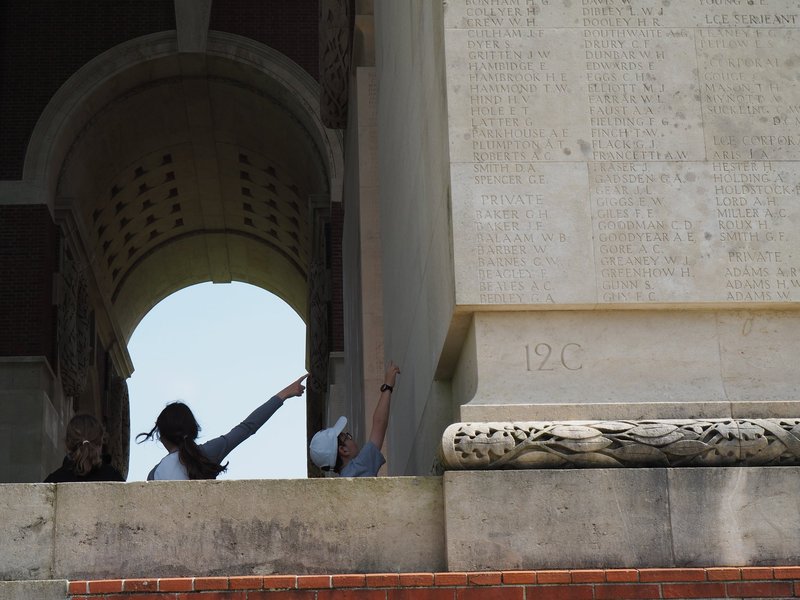
The Thiepval Memorial is located in the Somme region of Hauts-de-France. It is firmly anchored in the landscape, visible from the D929 between Bapaume and Albert. The site has a large parking lot for cars, mobile homes, and tour buses. A small museum-shop and an independent inn enhance the visit. We visited it in spring 2024.
The memorial is not only impressive for its size but also for the staggering number of names of fallen soldiers engraved in the stone. We were extremely lucky to visit the site at the same time as an English school (photo), which gives full meaning to criterion (iii).
# AI05 : Nécropole nationale française de prisonniers d'Effry :
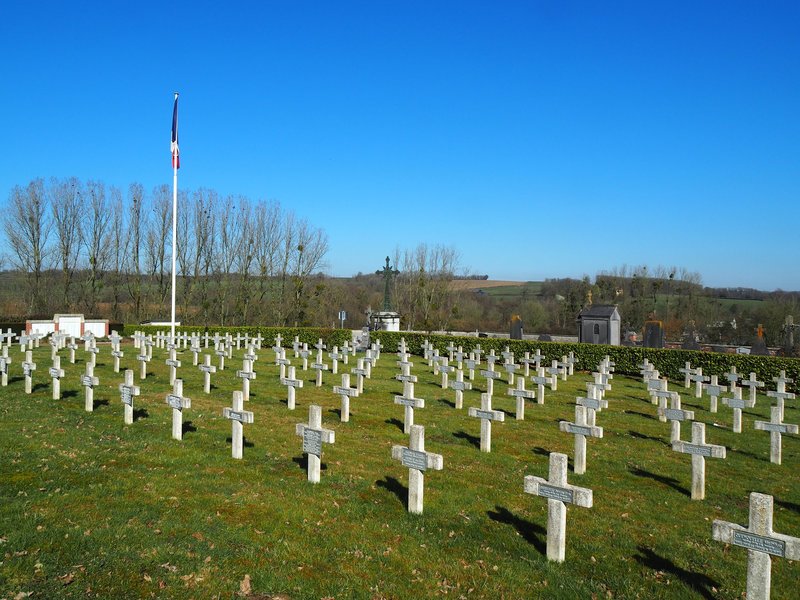
The Effry necropolis is located at the end of a small road on the edge of the eponymous village, not far from Laon, in Aisne, Hauts-de-France. It is best to leave your vehicle at the bottom of the latter along the Oise where there is a small area for kayakers. Although the cemetery itself is unremarkable, what is particularly frightening to note here is that these are people who died following mistreatment in a factory converted into a "hospital" by the Germans. In 1917, there were 6 deaths per day among the inmates and there are as many Belgians as Russians or French, a few Romanians and an Italian, women and children buried in the cemetery. This site shows how criterion (vi) is met: it was in reality an internment camp.
# AI04 Nécropole nationale française de Le Sourd & Cimetière militaire allemand de Le Sourd :
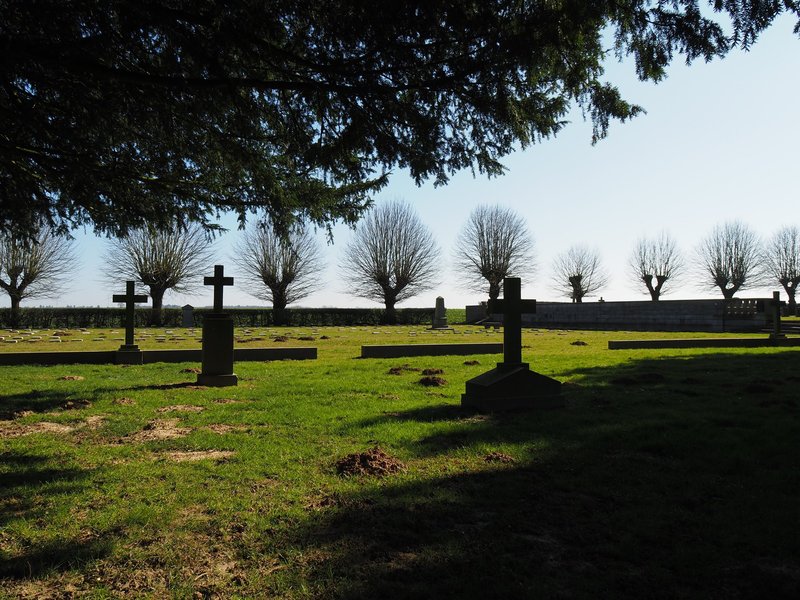
A military cemetery like so many others in the region, between Vervins and Guise, Aisne, Hauts-de-France, close to the D960 and surrounded by beetroot fields, so similar to the others that it becomes distressing. Here, French and Germans lie side by side. Only the silhouette of the weeping willows along the path and the crosses remind us how sad it all is.
# AI03 Cimetière militaire allemand de Veslud :
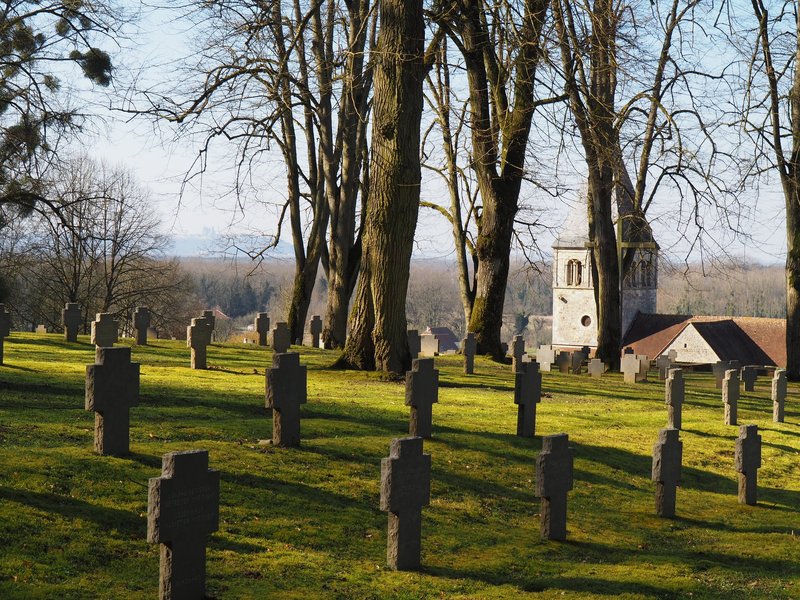
In Veslud village, still in Aisne, near Laon along the D1044, German soldiers who did not ask to be there are buried. Sad consolation for the families of the deceased: the site is magnificent, on the edge of the village and the forest. The regularly arranged graves overlook the parish church (Photo). It is best to leave your vehicle along the D25 at the bottom of the village and walk up: there is no parking nearby.
I'll allow myself a small digression here not far from Veslud: the German Military Cemetery of Montaigu is not included on the UNESCO list, but since one feels so alone anywhere in dialogue with the dead in the clearing surrounded by forests, it deserves to be mentioned. In its green setting, the red brick memorial is incredibly powerful; don't hesitate to climb up and enter the crypt. A strong sensation guaranteed. This cemetery, if it were listed, I think perfectly illustrates criterion (iv) as this memorial seemed to me to be architecturally unique in its kind.
# AI07 Nécropole nationale française de Cerny-en-Laonnois :
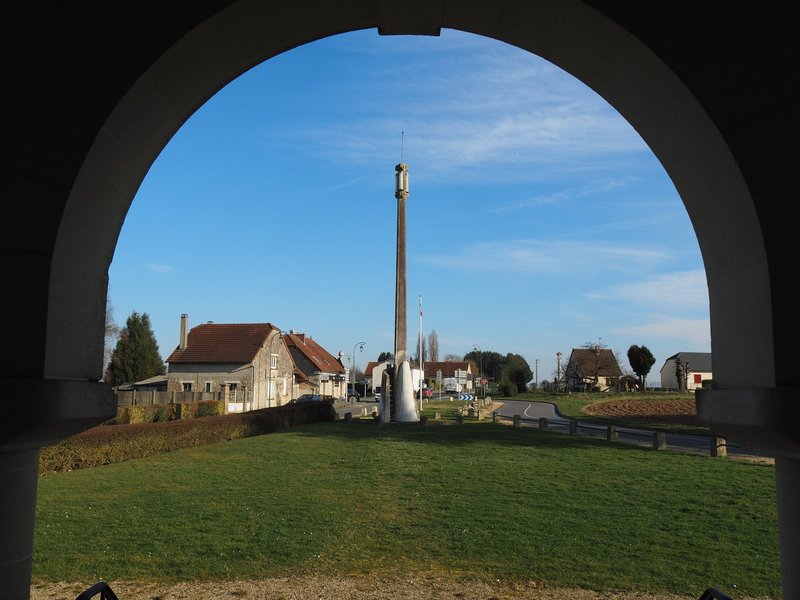
The necropolis is located in the center of the famous Chemin des Dames between Soissons and Coberny where the French offensive orchestrated by General Nivelle in 1917 was a bitter defeat and caused many deaths on both sides. This necropolis consists of two cemeteries, one French and one German, a chapel built in 1951 and a lantern of the dead dating from 1963 in the purest "50s" style where an eternal flame shines in memory of the soldiers.
Further east, still on the crest of the Chemin des Dames, I also passed through the very steep and grassy cemetery of AI08 Craonelle.
For those in a mobile home, there is a dope spot at the Vauclair abbey car park located just below Cerny-en-Laonnois where there is a restaurant open in season. The ruins of the abbey date from 1917 and are very pretty at sunset or early in the morning.
# MA02 Cimetière militaire italien de "Bligny":
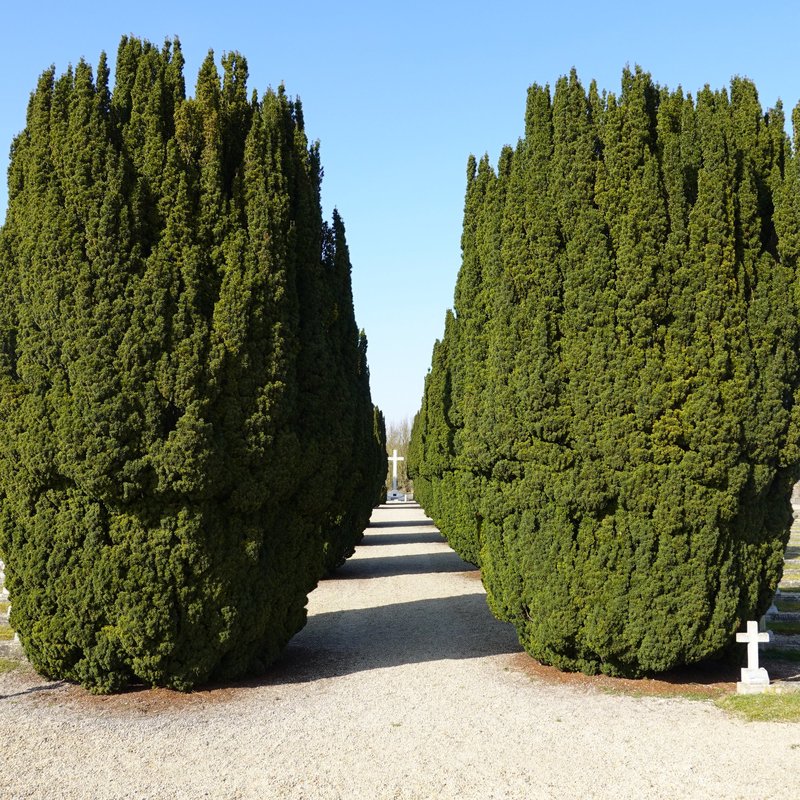
The next day, I headed to the Marne, where I visited several cemeteries of different nationalities: French, German, Italian, and Russian. What is extraordinary is to note the extreme diversity of nationalities of soldiers who participated in the fighting, and when you are in the Italian cemetery of Bligny, you would think you were in Italy, with its large avenues lined with majestic yew trees and its small white classical temple.
# MA03 Cimetière militaire & chapelle russe de Saint-Hilaire-le-Grand:
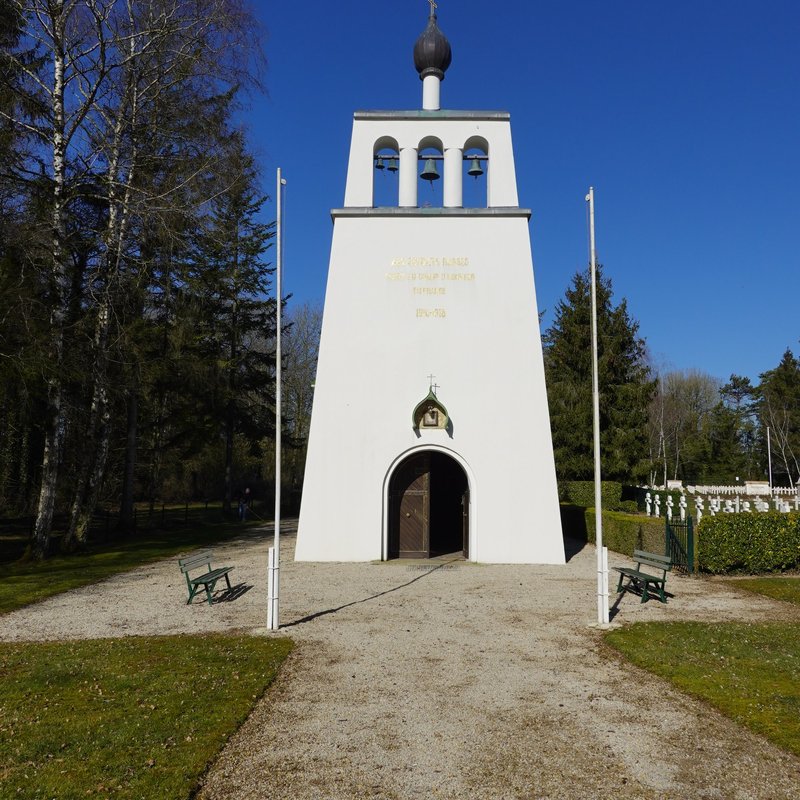
Not far from Suippes, Champagne, taking the D931, you arrive on the left at the Russian cemetery where you would think you were... in Russia! There is a chapel topped with several bronze bulbs and not far away a hermitage. What I learned there and what I was completely unaware of is that the October Revolution took place among the ranks of soldiers who clashed between White Russians and Red Russians... on the French front. For fear of contagion, the French authorities repressed this delocalized revolution with a murderous brutality !
# MA06 Nécropole nationale française & cimetière militaire allemand de la Crouée
# MA10 Ossuaire de Navarin: Monuments aux morts des Armées de Champagne:
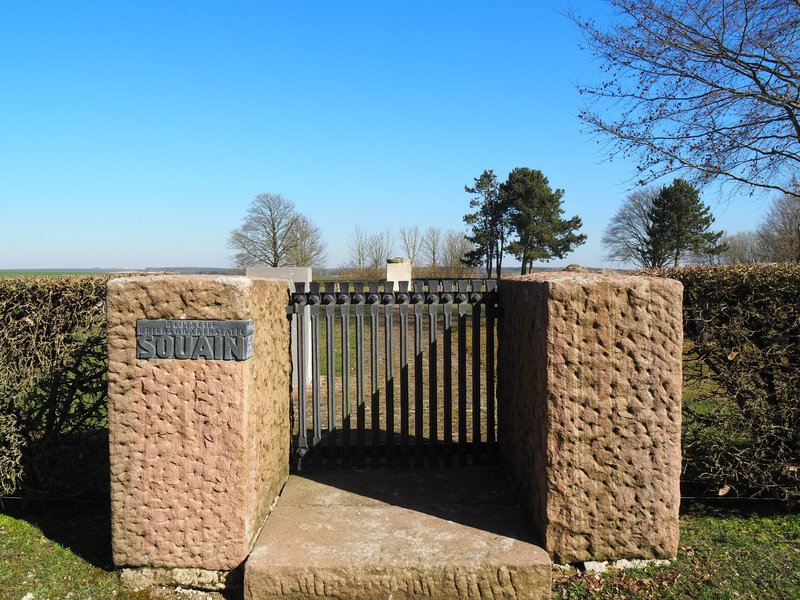
I ended my visit north of Suippes along the D977, and I visited the very large necropolis of La Crouée and then the ossuary of Navarin where is represented the youngest son of Theodore Roosevelt who died in aerial combat at Chamery south of Reims. The necropolis of La Crouée is without doubt the most majestic that I have visited, it is enormous and it almost seems as if the French dead are making friends with the German dead.
In conclusion, this short 3-day excursion has allowed me to convince myself of the merits of the World Heritage Committee's choice, even though I did not visit the sites that pose a problem in the eyes of ICOMOS. Perhaps I will revise my opinion when I have seen them, who knows? But given the current global political situation, a little reminder doesn't hurt... and what's more, the environment of these sites is, for the most part, very beautiful!
Comments
No comments yet.
